
It is cool to use google maps on our way but using a world map labeled while exploring and traveling gives you that old-school feeling, you can feel the adventure. All the world maps are detailed and pricey drawn, printed in so much high resolution that even small texts are easily eye-catching and the realistic sizes and attraction to everyone fond of them and if not, you can become by just looking at it. Children’s spatial reasoning skills can brushed up through reading maps and it’s helpful in the long run too.
Discovering the world, we live in through printed papers and designs makes us sharp and smart. How cool is it to know about a planet with living creatures with so many continents, countries, oceans, and mountains?
A world map labeled with geographical features provides an essential tool for understanding the layout of our planet. It encompasses continents, countries, major cities, rivers, and mountain ranges, among other significant elements. The labeling helps users quickly identify and navigate different regions, making it an invaluable resource for students, travelers, and researchers alike.

The labeled world map typically follows standard cartographic conventions, ensuring accuracy and clarity. Political boundaries demarcate countries, and color-coding distinguishes each continent. Major cities are marked with dots or small icons, while rivers and mountain ranges are clearly labeled with their names. Some maps may also include time zone lines and latitude-longitude grids for precise location reference.
In educational settings, a labeled world map serves as an interactive and engaging tool for geography lessons. Teachers can use it to teach students about different countries, their cultures, and the diverse environments that exist around the globe. Beyond education, labeled world maps find applications in various fields like logistics, international relations, and travel planning. Check out other World Maps:- World Map Equator Line, World Political Map Outline, Blank World Map for Kids.
A world map with countries labeled is a comprehensive visual representation of the Earth’s political divisions. It displays all recognized countries and territories, each identified by its name. Such a map is invaluable for understanding global geopolitics and the distribution of populations across various nations.
Countries are labeled with bold and legible text, ensuring clarity and easy identification. The map often uses distinct colors or patterns to differentiate between countries, making it simple to grasp complex information at a glance. Additionally, the map may include a legend that explains the color scheme used.
World maps with countries labeled are frequently updated to reflect the changing political landscape due to factors like independence movements, geopolitical shifts, or boundary disputes. These maps also serve as a reference for international trade, diplomacy, and strategic planning.
In classrooms, the map fosters students’ understanding of political geography, helping them learn about countries, capitals, and their relative sizes. Furthermore, these maps encourage discussions about international relations and global challenges, making it an essential educational resource.
A labeled simple world map offers a straightforward depiction of the Earth’s continents and major geographical features. It is designed for ease of use and clear comprehension, making it suitable for young learners, beginners, or anyone who needs a quick reference map.
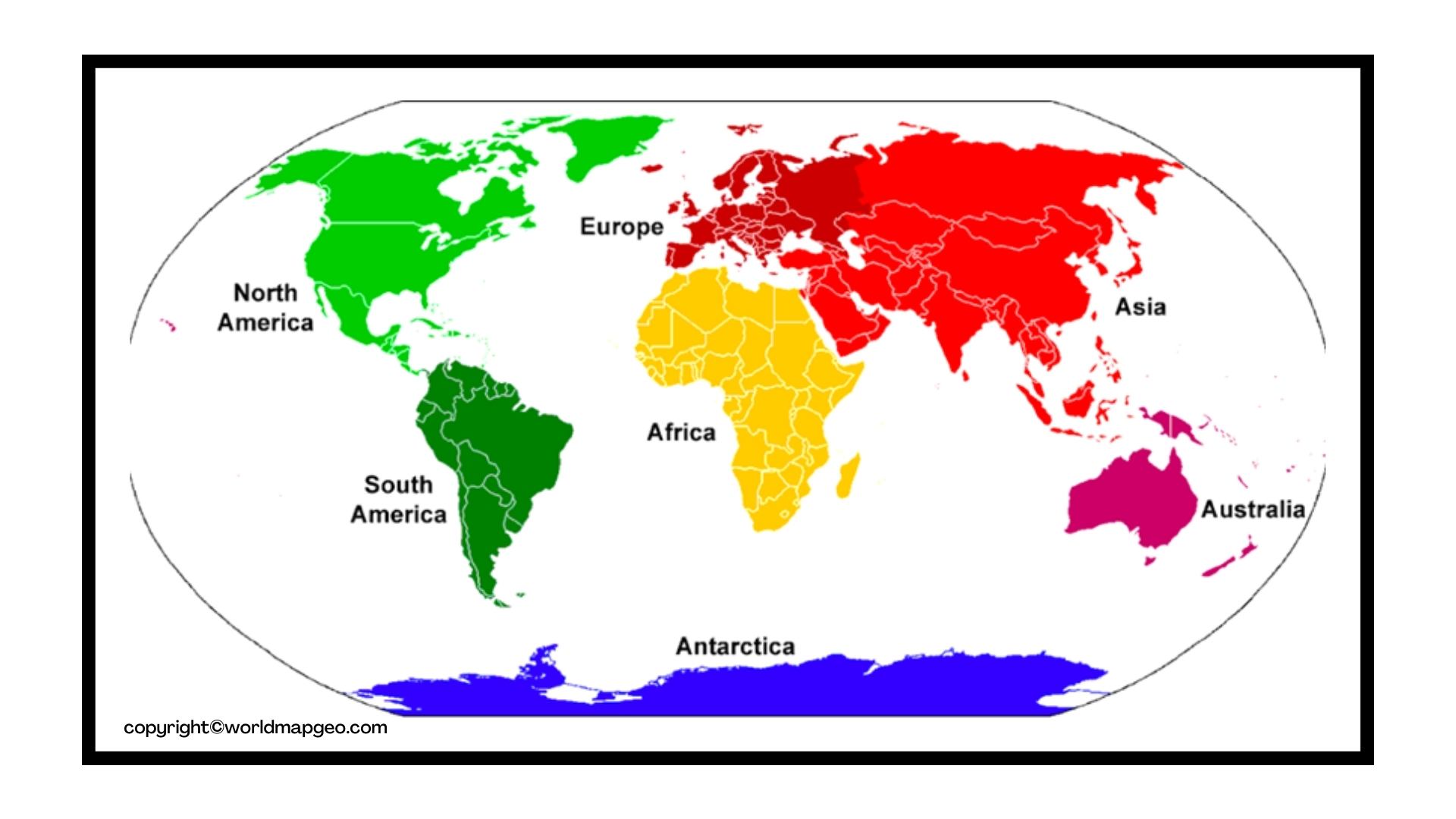
The simplicity of the map lies in its minimal design, using clear lines and basic shapes to represent continents and countries. The continents are labeled with distinct colors, making them easily recognizable. Political boundaries are depicted with thin lines, and country names are placed adjacent to their respective territories.
Simple world maps are particularly useful for introductory geography classes or as a quick visual aid for travelers to get a sense of global locations. The straightforward labeling helps individuals identify continents and major countries quickly.
Though lacking the detailed information of more complex maps, the labeled simple world map provides an excellent starting point for those new to geography or looking for a quick reference without overwhelming visual clutter.
A world map labeled with continents provides an essential overview of the planet’s large landmasses. Continents are massive, continuous stretches of land, and they play a fundamental role in defining the Earth’s physical geography. A labeled map helps individuals recognize and identify these continents with ease.
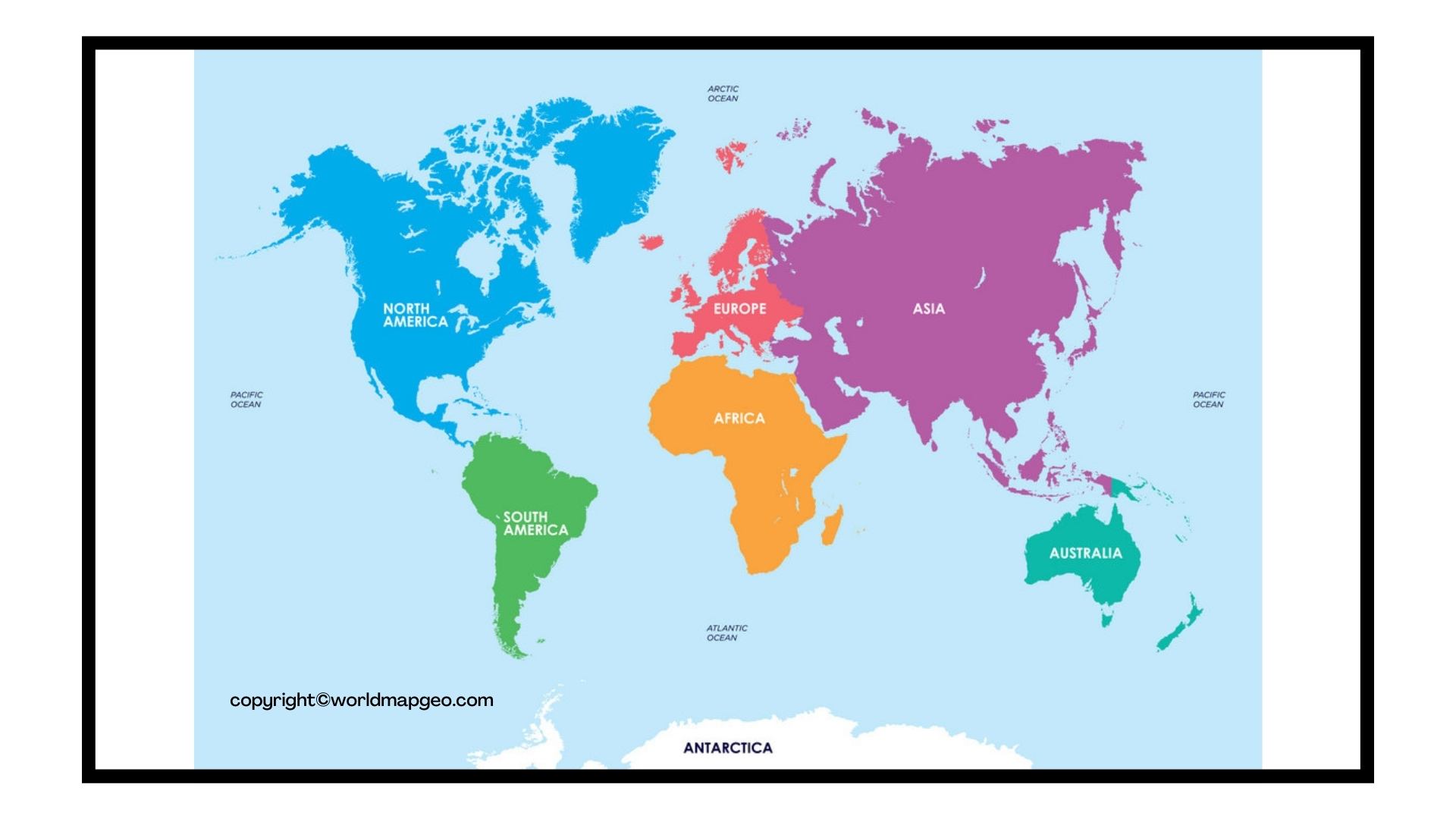
The seven continents—Asia, Africa, North America, South America, Antarctica, Europe, and Australia—are distinctly labeled on the map. Each continent is depicted using different colors, aiding visual differentiation. Additionally, the map may include minor continents or microcontinents like Zealandia and Madagascar, though these are less common on standard maps.
Labeled world maps featuring continents are crucial for educational purposes, especially in early geography lessons. Children can learn about the unique characteristics of each continent, such as their size, position, and cultural diversity. Moreover, these maps assist researchers, scientists, and policymakers in studying patterns of migration, climate, and biodiversity on a global scale.
In summary, a world map labeled with continents is a fundamental tool for understanding our planet’s physical geography and the diversity of its inhabitants.
A world map with oceans labeled provides a comprehensive view of Earth’s major bodies of water, which cover more than two-thirds of its surface. Oceans are crucial to life on our planet, influencing weather patterns, climate, and providing habitat for a vast array of marine species.
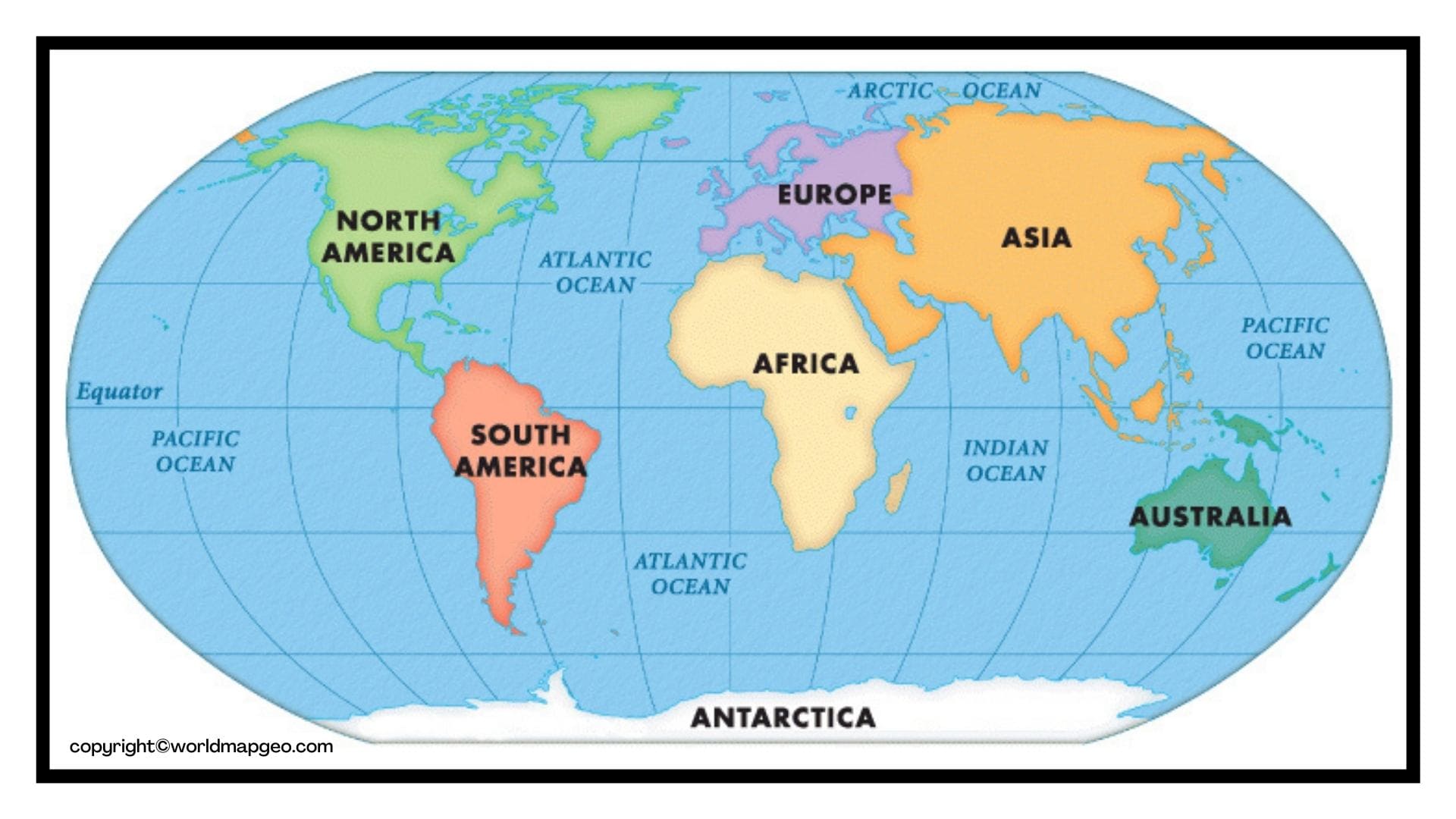
The map depicts the five main oceans—the Atlantic, Pacific, Indian, Southern (Antarctic), and Arctic Oceans—and labels them clearly. Each ocean may depicted with a distinct color, helping users easily distinguish them. Additionally, the map might include other significant bodies of water, such as the Mediterranean Sea, the Caribbean Sea, and the Gulf of Mexico.
Beyond their educational value, world maps with labeled oceans are vital for environmental research, maritime navigation, and marine conservation efforts. They help researchers study ocean currents, marine biodiversity, and the impact of human activities on marine ecosystems.
In classrooms, these maps enrich geography lessons by highlighting the significance of oceans in shaping the planet’s climate and fostering marine life. They also spark discussions about environmental conservation and the importance of preserving these vital aquatic ecosystems for future generations.
A world map picture labeled offers a visually appealing and informative representation of the Earth’s geography. Unlike traditional cartographic maps, a picture map incorporates artistic elements and graphics to make it engaging and accessible to a broader audience, including children and casual learners.
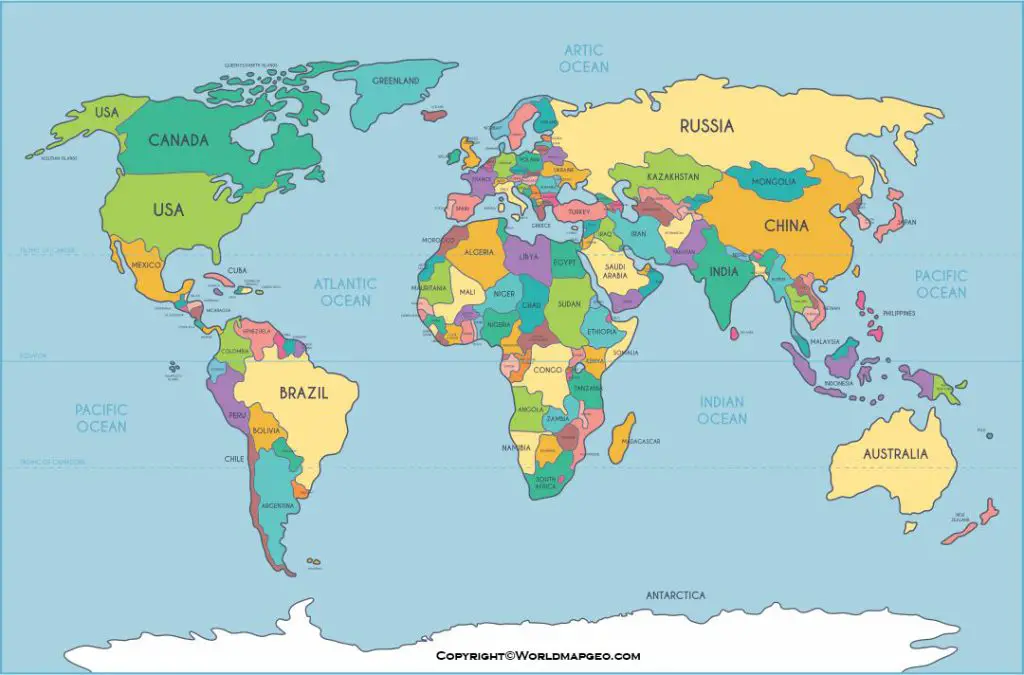
In a labeled world map picture, continents, countries, oceans, and major geographical features are creatively illustrated with vibrant colors and stylized icons. The map’s artistic nature doesn’t compromise its accuracy; instead, it provides a unique perspective that makes learning geography enjoyable.
The labeled world map picture finds applications in educational materials, children’s books, travel brochures, and even decorative posters. It serves as an excellent tool for teachers to introduce young students to the world’s various regions and cultures, igniting curiosity and encouraging exploration.
Moreover, this type of map can appeal to those who might find traditional cartographic maps daunting or uninteresting. By combining aesthetics and information, a labeled world map picture captivates the viewer, making them more likely to engage with and remember the geographical details presented.
A printable labeled world map is a digital or physical map that can easily printed for personal, educational, or commercial use. It serves as a versatile resource for a wide range of applications, including classroom activities, travel planning, and business presentations.
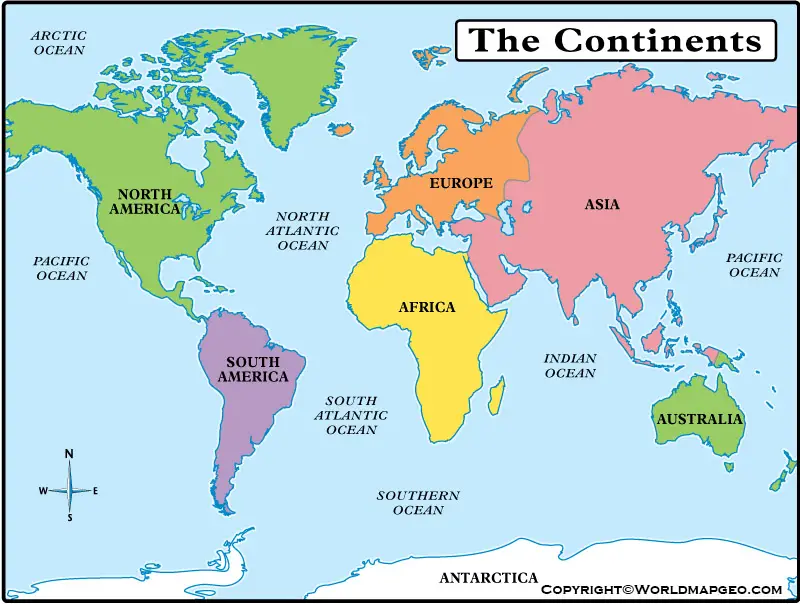
The map is designed to fit standard paper sizes, such as A4 or Letter, making it convenient for printing at home, school, or office. The labels for countries, continents, cities, and oceans clear and legible, ensuring that the map remains accurate and easy to read after printing.
Printable labeled world maps available in various formats, including PDF, JPEG, or PNG. PDF files often provide the advantage of vector graphics, allowing users to resize the map without losing quality. On the other hand, JPEG and PNG formats more suitable for digital use and quick online sharing.
Educators can use printable labeled world maps to create geography worksheets, quizzes, or interactive classroom exercises. Travel enthusiasts can print out maps to mark their desired destinations and plan their itineraries effectively. Businesses can utilize these maps for presentations or marketing materials with a global scope.
A world map with labeled bodies of water presents a comprehensive view of the planet’s diverse aquatic features, including rivers, lakes, seas, and gulfs. Bodies of water play a crucial role in shaping the Earth’s landscapes, ecosystems, and human settlements.
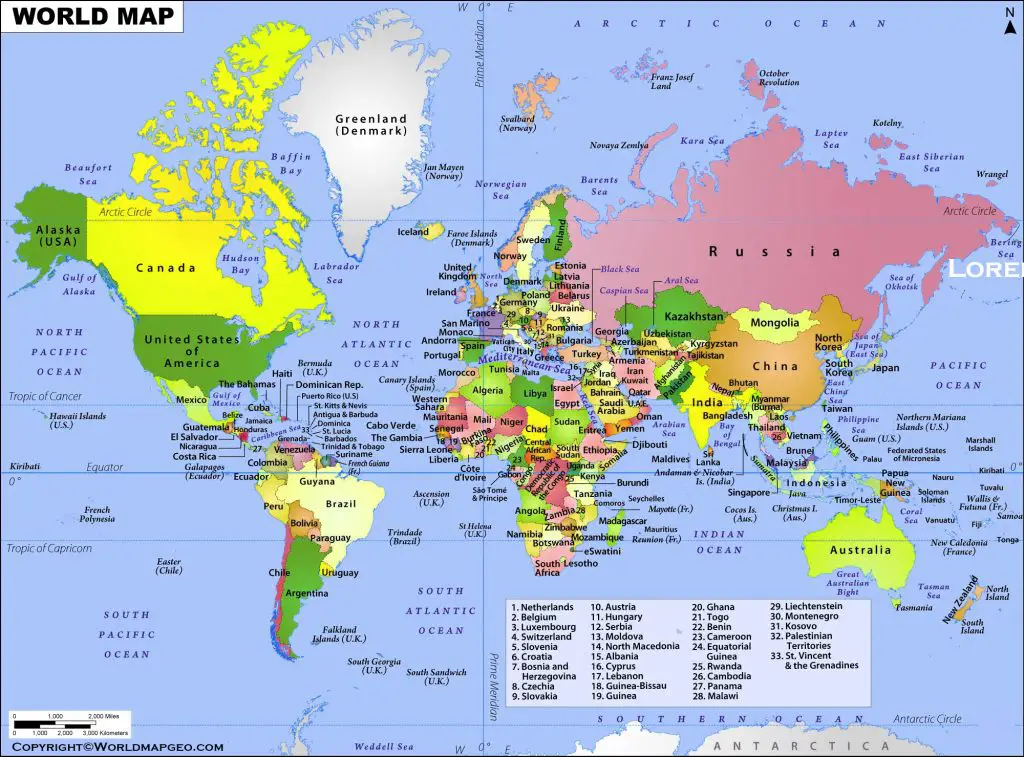
The map displays major rivers, such as the Nile, Amazon, and Mississippi, each labeled with their names. Lakes, like the Great Lakes in North America and the Caspian Sea, also prominently labeled. Seas, such as the Mediterranean, Caribbean, and Red Sea, labeled and differentiated with distinct colors. Additionally, the map may highlight essential gulfs and straits. Such as the Gulf of Mexico or the Strait of Gibraltar.
Labeled world maps with bodies of water valuable tools for environmentalists, hydrologists. And policymakers studying water resources, aquatic biodiversity, and conservation efforts. They also aid maritime navigation, allowing sailors and ship captains to plan routes and understand the geography of the seas they traverse.
In classrooms, these maps provide a comprehensive view of the Earth’s hydrography, fostering an understanding of how water shapes the physical and cultural landscapes of different regions. They also raise awareness about the importance of preserving and managing water resources sustainably.
A world map with regions labeled offers a detailed breakdown of the planet’s various geographical areas, each with distinct characteristics, cultures, and ecosystems. Regions may defined based on political, climatic, economic, or cultural criteria. Providing valuable insights into the diversity of our world.

The map labels different continents, countries, states, provinces, and territories, each belonging to specific regions. It might also highlight prominent geographical regions. Like the Sahara Desert, the Amazon Rainforest, the Himalayas, or the Arctic Circle.
Labeled world maps with regions widely used in education, business, and research. They help students learn about different regions’ unique attributes, such as languages, traditions, and economies. In business, these maps aid market analysis, identifying potential opportunities or challenges in specific geographic areas. For researchers, labeled regional maps essential for studying climate patterns, migration, and cultural diffusion.
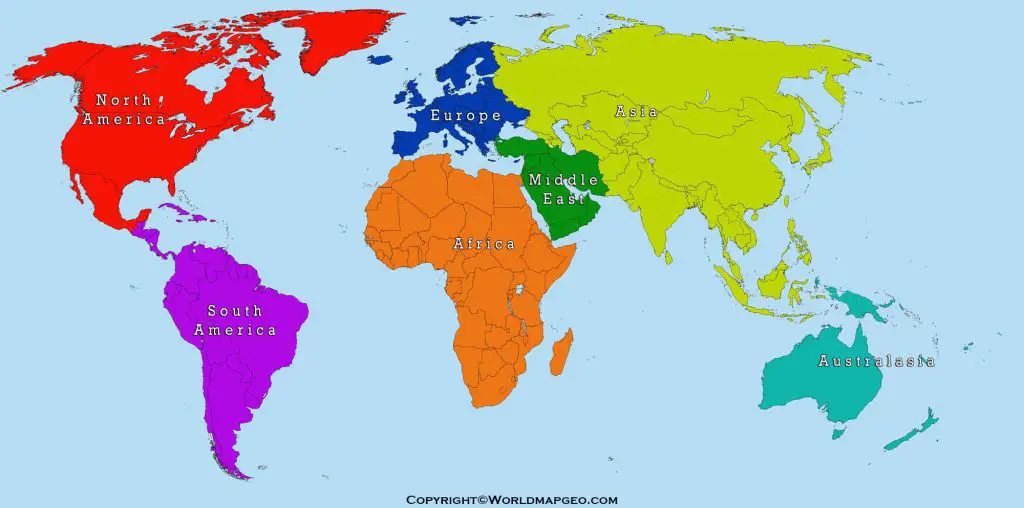
Overall, a world map with regions labeled deepens our understanding of the complexity. And interconnectedness of the global landscape, fostering a sense of curiosity and appreciation for the richness of the world we inhabit.